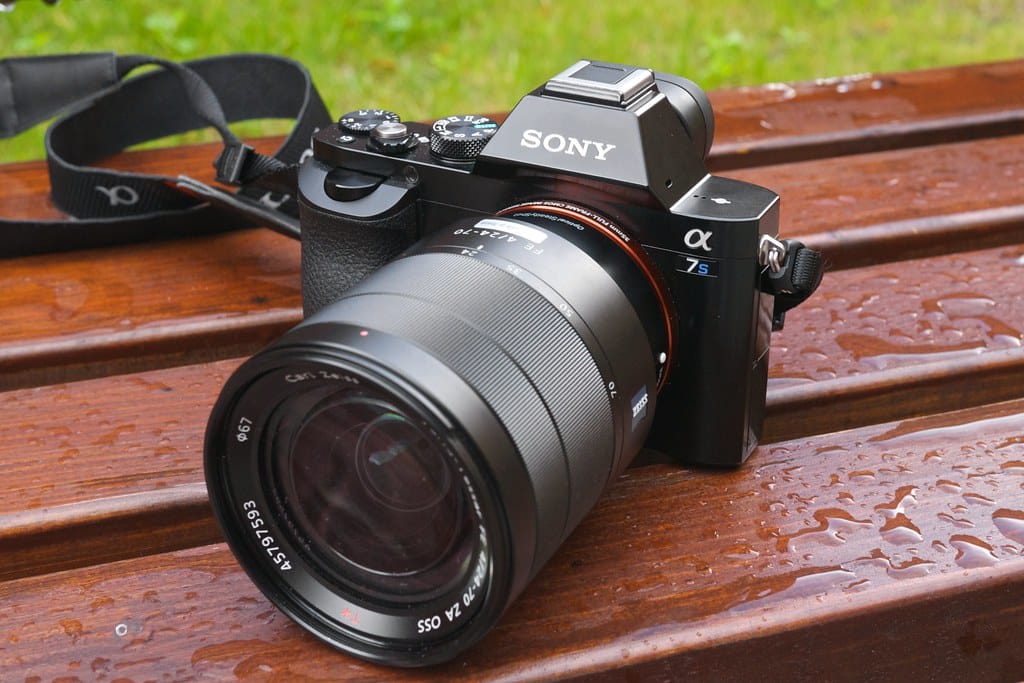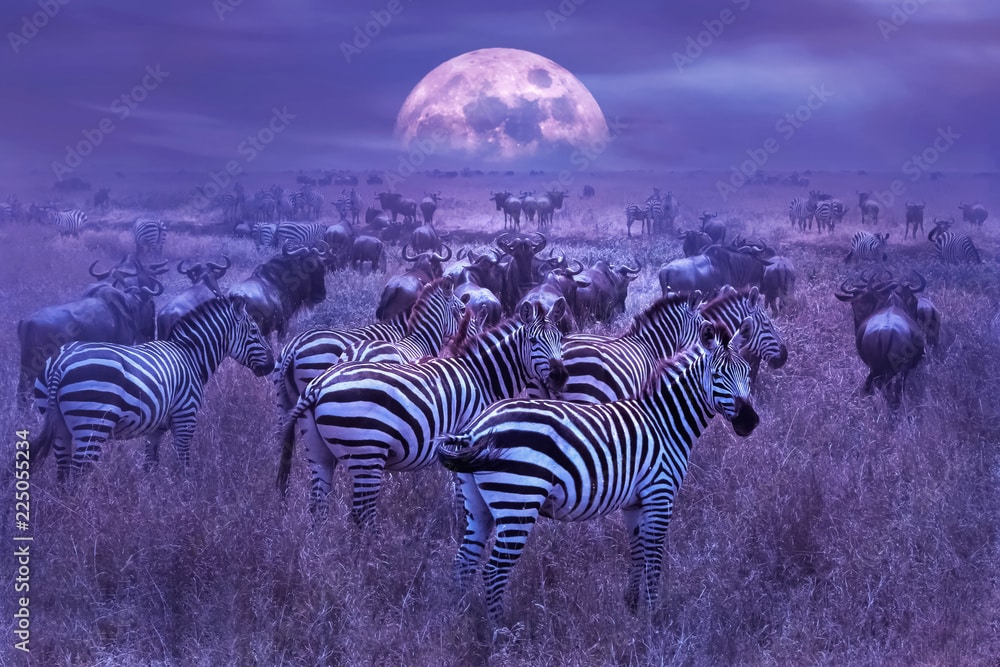Key Takeaways
-
The Sony A7S III is a powerful camera for night photography, boasting exceptional low-light capabilities.
-
Scouting a location during the day is crucial for successful night safaris.
-
Essential gear includes a sturdy tripod, wide-aperture lenses, and additional batteries.
-
Understanding animal behavior and the savanna ecosystem can enhance your night photography experience.
-
Camera settings like manual focus, wide aperture, and high ISO are key for capturing the Milky Way.

“Sony A7s | Kārlis Dambrāns | Flickr” from www.flickr.com and used with no modifications.
Sony A7S III: A Stargazer’s Companion for African Savanna Nights
Imagine the African savanna under a sky so clear, the stars blaze like city lights. Now imagine capturing that breathtaking scene with a camera that seems almost custom-built for the darkness. That’s the Sony A7S III, a tool that turns night into day for photographers and videographers alike.
The Camera That Sees in the Dark
What sets the Sony A7S III apart is its full-frame 12MP sensor, optimized for video and capable of remarkable low-light performance. The camera’s ability to keep noise to a minimum at high ISO settings is what makes it such a game-changer for night photography. You’ll find that even at ISO 6400, the images are crisp, with details in the shadows that other cameras would miss.
Why Sony A7S III is Ideal for Savanna Nightscapes
The savanna is a landscape of extremes, and capturing its nighttime essence requires a camera that can handle the challenges. With the A7S III, you’re equipped with:
-
A 4K video resolution that can go up to 120fps, giving you smooth slow-motion capabilities.
-
An autofocus system that excels in the dark, keeping your subjects sharp.
-
In-body image stabilization, ensuring that even handheld shots remain steady.
But most importantly, the camera’s dynamic range allows you to capture the nuances of the night, from the deepest blacks of the African sky to the subtle gradations of a dimly lit horizon.
Planning Your Night Safari Video & Photo Expedition
Scouting for the Perfect Location
When you’re after the perfect shot, preparation is key. Spend time during the day to scout locations. Look for clear horizons, interesting silhouettes, and water bodies that can reflect the starlight. Remember, what looks mundane by day can transform into a magical scene at night.
Packing Essential Gear and Accessories
Gearing up for a night safari is about balancing the essentials with the practical. You’ll need:
-
A reliable tripod: Stability is non-negotiable for long exposures.
-
Fast lenses: Opt for lenses with wide apertures like f/1.4 or f/1.8 to let in more light.
-
Extra batteries: Night photography can drain your batteries quickly, especially in video mode.
Don’t forget ample memory cards and protective gear for your camera, as the savanna can be unforgiving with dust and moisture.
Pro Tip: A remote shutter release can prevent camera shake when you’re capturing those stars as pinpoints of light.

“Zebras in the African savannah. Night …” from stock.adobe.com and used with no modifications.
Understanding the Savanna’s Nighttime Behavior
Photographing the savanna at night isn’t just about the technical aspects. You need to understand the rhythm of the wild. Animals behave differently when the sun goes down. Some become more active, while others settle in for the night. This knowledge can inform your compositions, whether you’re capturing the stillness of sleeping creatures or the drama of a nocturnal hunt.
Remember, safety is paramount. Always be aware of your surroundings and consider having a guide with you who knows the area and its inhabitants.
Mastering the Art of Night Sky Videography
When the sun dips below the horizon and the first stars begin to twinkle, that’s your cue. Night sky videography is about capturing the dance of celestial lights above, and the Sony A7S III is your partner in this cosmic waltz.
Camera Settings for Capturing the Milky Way
Setting up your camera correctly is crucial for night sky videography. To capture the Milky Way in all its glory, you’ll want to dial in settings that maximize light capture while keeping noise to a minimum. Start with these: For a practical example of these settings in action, see how they are applied in the Sony A7S III wolves night shoot.
-
Mode: Set your camera to Manual mode to have full control over the exposure.
-
Aperture: Open up your lens to the widest aperture, like f/2.8 or wider.
-
ISO: Begin at ISO 3200 and adjust as needed. The A7S III performs exceptionally well at high ISOs.
-
Shutter Speed: For video, a good rule of thumb is to set your shutter speed at double your frame rate. For stills, use the 500-rule (500 divided by the focal length of your lens to determine the maximum shutter speed to avoid star trails).
Remember, these settings aren’t set in stone. The ambient light and your creative vision will dictate the final adjustments.
Example: With the Sony A7S III, you might set your aperture to f/1.8, ISO to 6400, and shutter speed to 20 seconds for a stellar still shot of the Milky Way.
Composing Shots with African Wildlife
While the stars are the main act, the African wildlife can add a dramatic layer to your composition. Use a silhouette of a lone acacia tree or the outline of a giraffe to give context to the vastness of the cosmos. Patience is key here. Wait for the moment when an animal enters your frame to create a compelling story. For those interested in capturing the night sky, the 2023 Milky Way Photographer of the Year competition can be a great source of inspiration.
Lighting can also play a role. A gentle light on your foreground subject can separate it from the background, adding depth to your images. But use it sparingly; the natural light of the stars should be the hero.
Navigating Challenges of Low Light Conditions
Low light conditions are a given when shooting at night, but they don’t have to be a hindrance. Embrace the darkness. Use it to your advantage to create mood and atmosphere in your shots. The Sony A7S III’s sensor is your ally here, providing clean imagery where other cameras struggle. If you’re finding focus to be a challenge, switch to manual and use the magnification feature to hone in on a bright star or distant light.
Post-Processing Techniques for Dazzling Starlit Skies
Post-processing is where the night’s work comes to life. It’s your chance to enhance the raw beauty of the savanna night.
Stacking Images for Noise Reduction
One technique to reduce noise in your night sky shots is stacking. This involves taking multiple exposures of the same scene and blending them together. The Sony A7S III’s high ISO performance makes it a prime candidate for this method. Use software like Starry Landscape Stacker or Sequator for stacking stills, or average out noise in video post-production with software like Adobe After Effects.
Stacking not only reduces noise but also brings out fainter stars, creating a more vibrant night sky in your final image.
Enhancing Colors and Details in Editing Software
With your footage captured, it’s time to bring out the best in it. Tools like Adobe Lightroom and Photoshop are powerful allies. Here’s what you can do:
-
Adjust the white balance to bring out the natural colors of the night sky.
-
Increase the contrast to make the stars pop against the dark sky.
-
Sharpen the details to bring clarity to your subjects, whether they’re trees, animals, or distant galaxies.
The Sony A7S III captures footage that’s rich in data, which means you have plenty of latitude in post to create the image you envisioned when you first set up under the African sky.
By following these steps, you’ll be well on your way to creating mesmerizing nightscapes that capture the wonder of the African savanna. And with the Sony A7S III as your tool, the darkness of the night becomes your canvas, waiting to be illuminated with the beauty of the stars.
By following these steps, you’ll be well on your way to creating mesmerizing nightscapes that capture the wonder of the African savanna. And with the Sony A7S III as your tool, the darkness of the night becomes your canvas, waiting to be illuminated with the beauty of the stars.
Sharing Your Work on Social Media and Exhibits
Once you’ve captured the African night through your lens and polished your images in post-processing, it’s time to share your work with the world. Social media platforms like Instagram and Facebook are great for showcasing your photographs and videos. Use relevant hashtags, such as #SonyA7SIII, #nightsafari, and #starrynight, to reach a wider audience. Additionally, consider submitting your best pieces to photography exhibits or contests. Your unique perspective on the African savanna could inspire others and even garner recognition for your skills.
Frequently Asked Questions (FAQ)
Let’s address some common questions about using the Sony A7S III in the rugged and beautiful African savanna.
Can Sony A7S III Handle Harsh Weather Conditions of the African Savanna?
Absolutely. The Sony A7S III is built with a durable magnesium alloy chassis and is sealed against dust and moisture. It can withstand the challenging conditions of the African savanna, from dusty winds to sudden rain showers. However, it’s always wise to take extra precautions, such as using a rain cover, to protect your gear during extreme weather.
What Lenses Work Best with the A7S III when filming at night?
When filming at night, you want lenses with large apertures to capture as much light as possible. Prime lenses like the Sony FE 24mm f/1.4 GM or the Sony FE 20mm f/1.8 G are excellent choices for their wide apertures and sharp optics. Zoom lenses with constant f/2.8 apertures can also be effective, though they may not gather as much light as their prime counterparts.
How Do You Focus in Near Total Darkness with the A7S III?
Focusing in the dark can be tricky, but the Sony A7S III’s enhanced autofocus capabilities, including its low-light sensitivity, can lock onto subjects with surprising accuracy. If autofocus struggles, switch to manual focus. Use the camera’s focus magnifier to zoom in on a bright star or distant light, and adjust the focus ring until the image is sharp.
What are Some Safety Tips for Night Videography in the Wild?
Safety should be your top priority when shooting at night in the wild. Here are some tips:
-
Never venture out alone. Always have a companion or guide with you.
-
Stay aware of your surroundings and keep a safe distance from wildlife.
-
Use a headlamp with a red light mode to preserve your night vision and stay discreet.
-
Make sure your vehicle is in good working condition, and you have emergency supplies.
Respect the environment and the animals, and remember that your safety comes before any shot.
Example: When photographing a pride of lions at night, use a long lens to maintain a safe distance and a wide aperture to capture the intricate details in low light.
Are there Special Techniques for Capturing Wildlife at Night?
Wildlife photography at night requires patience, skill, and a bit of luck. Here are some techniques to help you capture those once-in-a-lifetime shots: For more in-depth information, consider reading about animal video production like a pro.
-
Use a spotlight or flash with a red filter to minimize disturbance to the animals.
-
Set up near waterholes or known animal paths to increase your chances of encounters.
-
Shoot in burst mode to capture action and movement.
-
Remain silent and still to avoid startling the wildlife.
By combining these techniques with the Sony A7S III’s capabilities, you’ll be well-equipped to document the nocturnal wonders of the African savanna.
In conclusion, the Sony A7S III is an exceptional tool for capturing the essence of the African savanna under the stars. With its robust build, unparalleled low-light performance, and advanced video features, it empowers photographers and videographers to explore the night like never before. Whether you’re an experienced professional or a passionate enthusiast, the A7S III can help you bring the captivating stories of the savanna’s nocturnal world to life. So grab your gear, embrace the adventure, and let the Sony A7S III be your guide to the stars.




